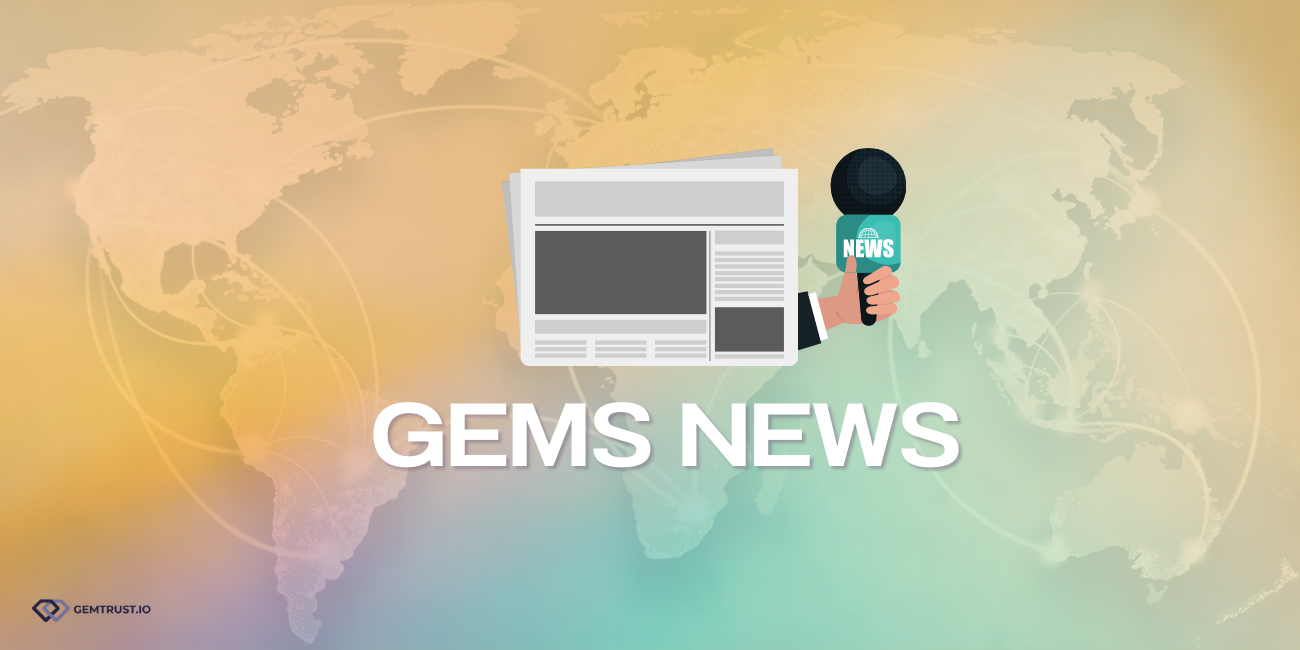
AIGS Ramps Up Services in China-an Exclusive Interview with Gloria Chen, CEO of AIGS China
by Julius Zheng
"The operation of AIGS in China brings experience, expertise and technology developed by AIGS Bangkok Laboratory in over 40 years, to provide high-quality, consistent, efficient and convenient grading services to trade members, gemstone enthusiasts and consumers in China, serving the country's large gemstone consumer base and increasingly mature industry. "
Established in 1978, AIGS (Asian Institute of Gemological Sciences) is one the first international gemological education institutes and gem testing laboratories in Asia. In June 2020, AIGS made another breakthrough as the first foreign gem testing institute operating in Shanghai and Shenzhen of China. Besides its grading services, AIGS China has also initiated a variety of innovative projects and events, including collaborating with China's most prominent counterpart, holding a series of webinars, hosting AIGS China Pavilion in China's most important trade shows, providing quality assurance services in rough trading fairs, and organizing "the World's Most Beautiful Ruby Contest 2022".
In this exclusive interview, you can gain insight into the coloured gemstone business in China from Gloria Chen, CEO of AIGS China. You will also have access to first - hand information and analysis of gemstones submitted to the gem laboratory, which is a good indication of popularity and trend in China.
How is the importance and acceptance of gemstone grading reports to Chinese trade members and consumers? Do they accept grading reports from any labs? Which factors are more important, such as colour, origin and treatment?
Gloria Chen: Coloured gemstones have a long history in Europe, the USA, Japan, Brazil, etc. However, China is a young and emerging market for coloured gemstones which has now passed its infancy and is entering a period of rapid growth and development. Most Chinese consumers are still in a state of enlightenment with coloured gemstones and the information in the market is not transparent. Consumers are more interested in verifying the authenticity of a gemstone and whether it has been heat-treated, rather than the more specific needs of colour and origin. For the majority of domestic consumers, the first consideration in choosing coloured gemstones is their investment value, and wearability and aesthetics are only secondary.
Consumers in China are not sufficiently familiar with various gemstone testing institutes, so they tend to choose the more authoritative and well-known laboratories among the many. For example, the public knows that AIGS is highly authoritative and widely recognized in testing rubies and sapphires, so they will choose AIGS, especially in grading reports for rubies and sapphires.
What is the significance of setting up an AIGS laboratory in China and how important is AIGS to Chinese users?
Chen: The opening of AIGS China is a great milestone for the Chinese gemstone industry and will accelerate its development. The operation of AIGS in China brings experience, expertise and technology developed by AIGS Bangkok Laboratory in over 40 years, to provide high• quality, consistent, efficient and convenient grading services to trade members, gemstone enthusiasts and consumers in China, serving the country's large gemstone consumer base and increasingly mature industry.
In 2020, AIGS introduced grading reports of origin for rubies from Myanmar with specific mining areas, including Mogkok and Mongshu, to make it easier for customers to understand the origin of gemstones, and to provide more efficient testing services for businesses. We have also held a series of webinars for consumer education as well as professional training. We have provided a wide variety of, including the new Jedi Spinel and Santa Maria Aquamarine grading reports.
As an important participant in the standardization process of the coloured gemstone industry, AIGS, in its capacity as a founding member of the Asia-Pacific Gemstone and Technology Standardisation Alliance (AGA), implements standards to protect consumer confidence and enable consumers to choose jewellery products based on standards and expertise, and carries out technology exchanges and scientific research cooperation to share information on consumer markets and unified testing techniques.
What is the response in China to the colour codes and grading reports introduced in the past two years, such as Santa Maria Aquamarine and Jedi Spine!?
Chen: The price of Jedi spinels has surged, especially since 2016, therefore for the Jedi spine! market, which is in a chaotic state with ambiguous standards, it is necessary for authoritative testing institutes to come up with colour definition standards with reference to the market.
Although it is only in the last two years that AIGS has introduced the "Santa Maria" aquamarine and "Jedi" spinel colour codes, they have been quickly understood and accepted by Chinese consumers, and the Chinese market has been very receptive to these names, owing to the strict standards and the aesthetics of the gemstones in line with public expectations.
Which gemstones are the most popular in China in terms of lab submissions?
Chen: AIGS is a pioneer in developing a colour grading system for rubies and sapphires. Its terminology is in alignment with the market and the system is still widely used worldwide. Its research on detection of the treatment of rubies and sapphires and in origin determination are also recognized by the coloured gemstone community in the world. According to our 2021 data, rubies are still the most popular coloured gemstones in the market, accounting for 42% of the stones submitted to AIGS China lab. 40% of rubies are tested for origin.
As red is a highly treasured colour in traditional Chinese culture, rubies are the most desirable for the Chinese market, and it is clear from the data that the majority of Chinese consumers still favour the colour "pigeon blood red", which is the first key factor in consideration for the purchase of natural rubies. As a shift in perception - consumers are becoming more and more sophisticated and detailed in their requirements for information and quality of gemstones when shopping for rubies, in terms of colour, clarity, origin, treatment, etc.
Rubies of 1 to 3 carats are currently the mainstream of the market. High quality large carat rubies are still a rare commodity in the Chinese market, with 5 carats or more rare and 10 carats and above extremely rare.
In terms of the origin of rubies, Mozambique remains the main source of rubies, accounting for 52% of the total, followed by 25% from Burma. Other origins include Thailand, Tajikistan, Tanzania, Afghanistan, Pakistan, Vietnam, etc., accounting for a total of 16%.
In terms of treatment, unheated rubies account for 76% of rubies submitted to AIGS China Lab, indicating that even though heat treatment of rubies is an internationally accepted process of treatment, Chinese consumers prefer "no heat" rubies that are untouched by human interference.
In 2021 and 2022, AIGS China has provided quality assurance service in the rough coloured gemstone viewing and sales events in Guangzhou. What is the significance of such service?
Chen: In order to promote the standard development of the industry and to protect the trade in rough materials, AIGS China and Guangdong Gems and Jade Exchange have jointly organized the Rough Coloured Gemstone Fair for two years. AIGS provides sampling checks for all products in the fair. With the rapid development of the coloured gemstone market, a grading system for gemstones has become increasingly important. AIGS China, together with Guangdong Gems and Jade Exchange and Chenghao Jewellery, which provides the rough gemstones, worked together for the first time to complete the grading of the rough gemstones to regulate the trade.
What is the significance of The World's Most Beautiful Ruby Contest2022 "and how hot is participation?
Chen: The award ceremony of "the World's Most Beautiful Ruby Contest 2022" was held on July 15 in Shenzhen. The competition was organized by AIGS China, with hundreds of participating companies, entries of over a thousand pieces of jewellery and loose stones, and over 10,000 voting viewers. As an international jewellery event, we have invited internationally renowned experts from the United States, Thailand, Switzerland, China and other countries as judges. Hundreds of guests attended the award ceremony, exchanging the latest information on ruby in a lively atmosphere. The competition brought together gemstone merchants from China, USA, UK, France, Thailand, India, Sri Lanka and other countries.
The competition aims to support and promote public awareness and understanding of the value of rubies, hoping that more Chinese brands will be known by, driving the development of the coloured gemstone industry and promoting the culture of coloured gemstones.
